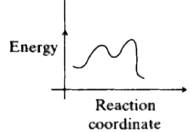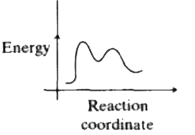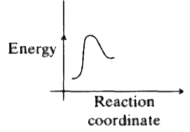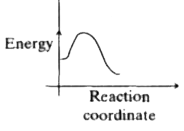How much of the following are strong electorlytes?
a. NH3 b. NH4CI c. CH3COOH
d. CH3COONa e. HCI f. NaCI
C and D
A and B
A and C
C and D
The correct Answer is:C
Step by step video & text solution for How much of the following are strong electorlytes? a. NH_(3) b. NH_(4)CI c. CH_(3)COOH d. CH_(3)COONa e. HCI f. NaCI by Chemistry experts to help you in doubts & scoring excellent marks in Class 12 exams.
Updated on:21/07/2023Similar Questions
How much of the following 0.1M solutions are acidic?
a. NH4CI b. NaOH c. HC2H3O2 d. NaCI
e. NH3+NH4CI f. NH3 g. HCI
h. HCIO4 i.(NH4)2SO4 j. K2SO4
View SolutionWhich of the following may act as buffer? (A) NH4Cl +NH4OH]
(B) CH3COOH+CH3COONa (C) 40ml of 0.1MNH4OH+20ml" .of 0.1MHCl (D) All of these
View Solution
Knowledge Check
Which of the following are isoelectronic species?
+CH3
II . NH−2
III . NH+4
IV NH3AI , II and IIIBII ,III and IVCI , II and IVDII and IEnergy profile for the following reaction will be
NH3+CH3−I→CH3−+NH3A B
B C
C D
D
Which of the following increasing order of pH of 0.1 M solution of the compound
(A) HCOONH4
(B) CH3COONH4
( C ) CH3COONa
(D) NH4CI is correct ?AA<D<B<CBD<A<C<BCA<D<C<BDD<A<B<C
Which of the reagents listed below could be added to water to make 0.1M solutions of each of the following ions?
a. ⊕NH4
b. CH3COOΘ
c. C1Θ
i. NH3 ii. NH4C1
iii. CH3COOH
iv. CH3COONa
v. HC1
vi. NaC1.
View Solution(i) State the formula and name the conjugate base of each of the following species :
(a)H3O+(b)HSO−4(C)NH+4(d)HF(e)CH3COOH(f)CH3NH+3(g)H3PO4(h)H2PO−4.
(ii) State the formula and name the conjugate acid of each of the following species :
(a)OH−(b)HPO2−4(C)H2PO−4(d)CH3NH2(e)CO2−3(f)NH3(g)CH3COO−(h)HS−
View SolutionHow many of the following has hydrogen bonding
(a) NH3 , (b) CH4 , (c) H2O
(d) HI , (e) HF , (f) HCOOH
(g) B(OH)3 , (h) CH3COOH , (i) HCO3−ion
View SolutionFind the number of aqueous solution which turn litmus paper blue.
(a) NH4OH (b) NaOH
(c) NH4CI (d) CH3COONa
(e) NaHSO4 (f) HCI
View SolutionBasicity of the following amines in aqueous medium is
(1) CH3−NH2
(2) (CH3)2NH
(3) (CH3)2N
(4) NH3
View Solution
